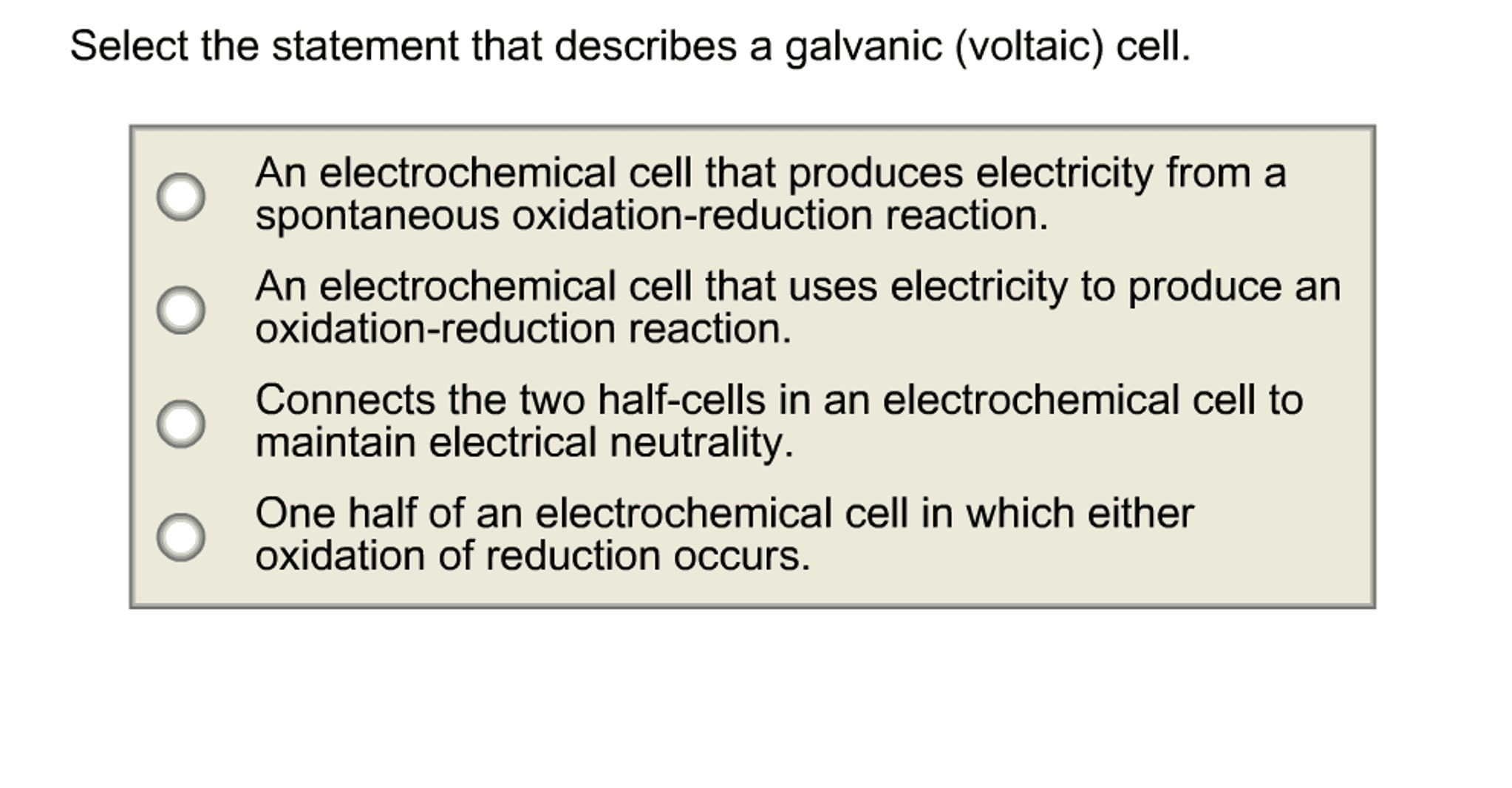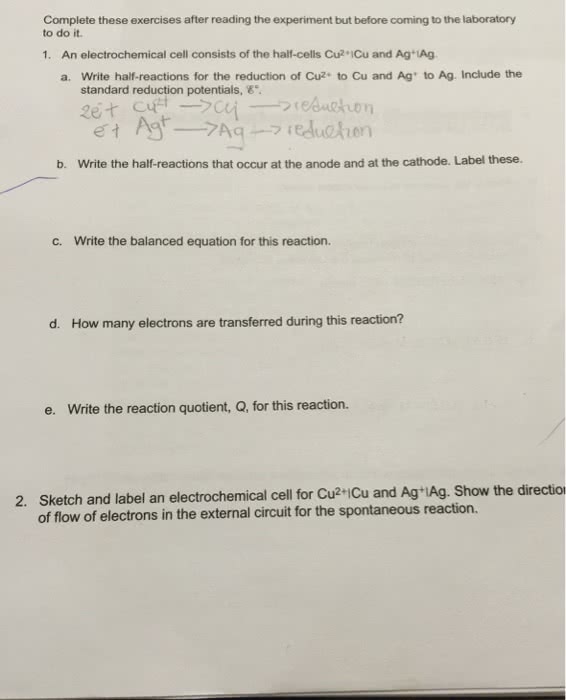CH 302 Lecture Notes - Lecture 1: Houghton Mifflin Harcourt, Copper(Ii) Sulfate, Zinc Sulfate
Document Summary
Electrochemistry deals with chemical changes produced by electric current and with the production of electricity by chemical reactions. The reacting system is contained in a cell. Electrochemical cells are devices in which an electric current is produced as a result of a spontaneous chemical reaction, or is used to cause a non-spontaneous chemical reaction to occur. Therefore we have two types of electrochemical cells: galvanic cells and electrolytic cells. These are cells in which spontaneous oxidation-reduction reactions produce electrical energy. The two halves of the redox reactions are separated and the electron transfer occurs through an external circuit. Each half-cell consists of the oxidized and reduced forms of a species in contact with each other. A common kind of a half-cell consists of a piece of metal immersed in a solution of its ions. Electrical contact between the two electrodes is frequently made by a wire and a salt bridge.



